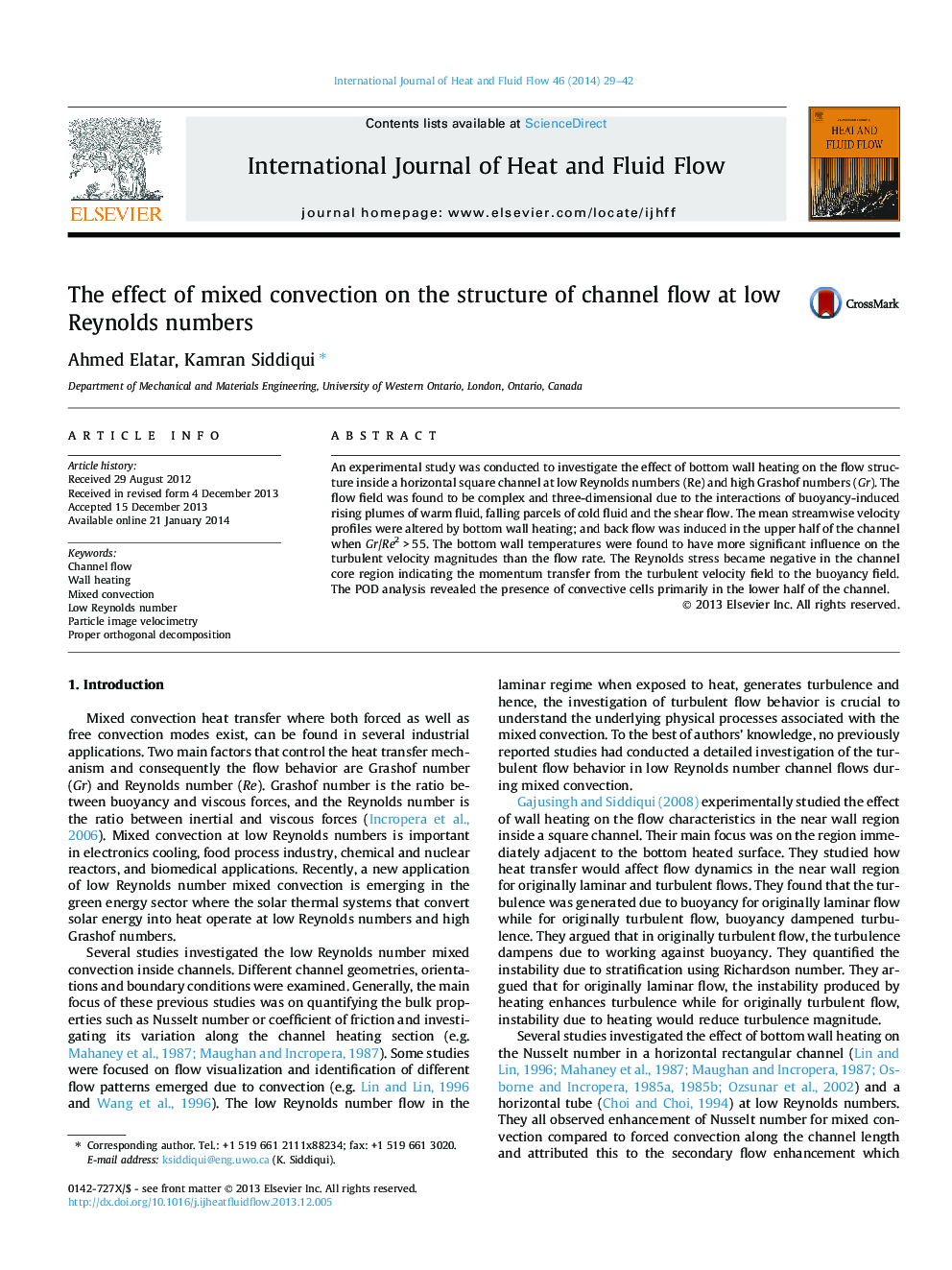| Article ID | Journal | Published Year | Pages | File Type |
|---|---|---|---|---|
| 655492 | International Journal of Heat and Fluid Flow | 2014 | 14 Pages |
Abstract
An experimental study was conducted to investigate the effect of bottom wall heating on the flow structure inside a horizontal square channel at low Reynolds numbers (Re) and high Grashof numbers (Gr). The flow field was found to be complex and three-dimensional due to the interactions of buoyancy-induced rising plumes of warm fluid, falling parcels of cold fluid and the shear flow. The mean streamwise velocity profiles were altered by bottom wall heating; and back flow was induced in the upper half of the channel when Gr/Re2Â >Â 55. The bottom wall temperatures were found to have more significant influence on the turbulent velocity magnitudes than the flow rate. The Reynolds stress became negative in the channel core region indicating the momentum transfer from the turbulent velocity field to the buoyancy field. The POD analysis revealed the presence of convective cells primarily in the lower half of the channel.
Keywords
Related Topics
Physical Sciences and Engineering
Chemical Engineering
Fluid Flow and Transfer Processes
Authors
Ahmed Elatar, Kamran Siddiqui,
